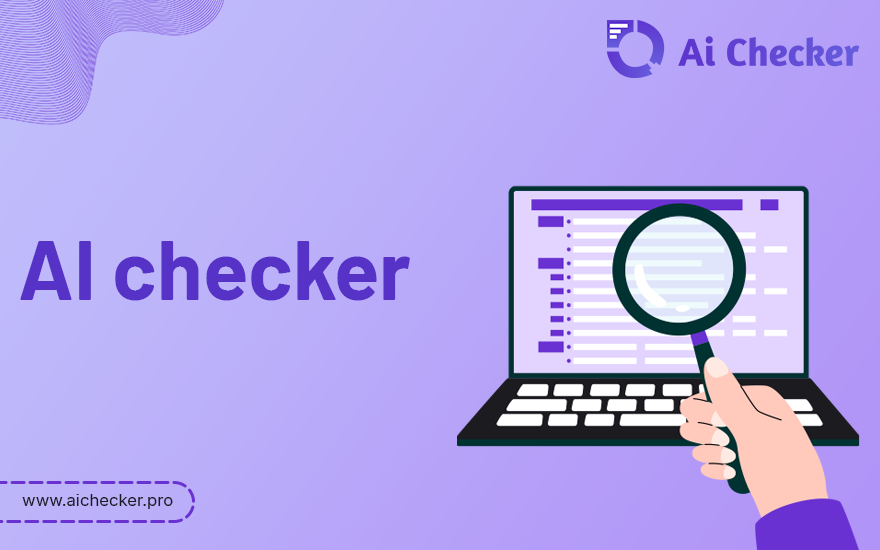In today’s digital landscape, artificial intelligence has revolutionized content creation, making it possible to generate text at unprecedented speeds and scales. However, this technological advancement has also created new challenges for educators, publishers, and content managers who need to distinguish between human-written and AI-generated content. Enter AI checkers – sophisticated tools designed to detect artificial intelligence authorship in written text. These detection systems have become essential resources for maintaining content authenticity, academic integrity, and editorial standards across various industries.
The proliferation of AI writing tools has made it increasingly difficult to identify machine-generated content through manual review alone. AI checkers bridge this gap by employing advanced algorithms and machine learning techniques to analyze text patterns, linguistic structures, and writing characteristics that typically distinguish human writing from artificial intelligence output.
What is an AI Checker?
An AI checker is a specialized software tool that analyzes written content to determine whether it was created by artificial intelligence or authored by a human writer. These detection systems utilize sophisticated algorithms trained on vast datasets of both human-written and AI-generated text to identify telltale signs of machine authorship.
AI checkers examine multiple aspects of writing, including sentence structure, vocabulary usage, coherence patterns, and stylistic consistency. They look for specific markers that commonly appear in AI-generated content, such as repetitive phrasing, unnatural transitions, or overly perfect grammar that lacks the subtle imperfections typically found in human writing.
These tools serve various stakeholders, from educators verifying student submissions to content managers ensuring originality in published materials. They provide confidence scores or percentage likelihood that content was AI-generated, helping users make informed decisions about text authenticity.
How Does It Work?
1. Enter the Text
The process begins when users input their content into the AI checker interface. Most platforms support various input methods, including direct text pasting, file uploads, or URL submissions for web-based content. The system accepts different file formats such as Word documents, PDFs, or plain text files, making it accessible for diverse content types and sources.
2. Click on the “Detection” button
Once the text is loaded, users initiate the analysis by clicking the detection or analyze button. This triggers the AI checker’s algorithms to begin processing the submitted content. The system starts examining the text through multiple analytical layers, comparing it against trained models that understand the differences between human and AI writing patterns.
3. View the Result
Within seconds or minutes, depending on the text length and system complexity, users receive detailed results. These typically include a percentage score indicating the likelihood of AI generation, highlighted sections that triggered detection algorithms, and explanatory notes about specific characteristics that influenced the assessment. Many tools provide confidence levels and detailed breakdowns of suspicious elements.
Benefits of AI Content Detector
AI content detectors offer numerous advantages for maintaining content integrity. They provide rapid analysis capabilities, processing large volumes of text in minutes rather than hours of manual review. This efficiency makes them invaluable for educators managing multiple student submissions or content managers overseeing extensive publication schedules.
These tools enhance academic integrity by helping institutions identify potential cases of AI-assisted cheating or unauthorized use of writing assistance. Publishers benefit from ensuring their content meets authenticity standards, protecting their reputation and editorial credibility.
AI checkers also support quality control processes by identifying content that may require human revision or additional oversight. They help organizations maintain consistent standards across their content portfolios while reducing the manual effort required for authenticity verification.
Features of AI Checker
Modern AI checkers incorporate advanced features designed to provide comprehensive analysis. Multi-language support enables detection across various linguistic contexts, while batch processing capabilities allow simultaneous analysis of multiple documents. Real-time detection provides instant feedback for time-sensitive applications.
Advanced systems offer detailed reporting features, including highlighted suspicious passages, confidence scoring, and analytical explanations. Some platforms integrate with popular content management systems or educational platforms, streamlining workflow integration.
Privacy and security features ensure that submitted content remains confidential, with many systems offering encrypted transmission and automatic content deletion after analysis. User-friendly interfaces make these tools accessible to both technical and non-technical users.
Why Choose Bypass AI Detector?
When selecting an AI detection tool, several factors distinguish superior platforms. Accuracy rates represent the most critical consideration, as false positives or negatives can have significant consequences. Leading tools maintain high accuracy through continuous model training and updates that keep pace with evolving AI writing technologies.
Comprehensive analysis capabilities that examine multiple writing dimensions provide more reliable results than single-factor detection systems. Integration options, customer support quality, and transparent pricing models also influence tool selection decisions.
The best AI checkers offer regular updates to their detection algorithms, ensuring effectiveness against new AI writing models as they emerge. This ongoing development cycle maintains detection accuracy in the rapidly evolving artificial intelligence landscape.
Use Cases of AI Checker
AI checkers serve diverse applications across multiple industries. Educational institutions use them to verify student assignment authenticity and maintain academic integrity standards. Publishers employ these tools to ensure content originality and protect their editorial reputation.
Content marketing teams utilize AI checkers to verify that outsourced or freelance content meets authenticity requirements. Legal professionals may use them to examine documents in cases involving intellectual property or authorship disputes.
Research organizations apply AI detection to maintain publication standards and ensure that submitted papers represent genuine scholarly work. News organizations use these tools to verify the authenticity of submitted articles and maintain journalistic integrity.
Conclusion
AI detector represent essential tools in our increasingly AI-integrated content landscape. They provide reliable methods for distinguishing between human and artificial intelligence authorship, supporting integrity across educational, publishing, and professional contexts. As AI writing technology continues advancing, these detection tools will remain crucial for maintaining content authenticity and trust.
The effectiveness of AI checkers depends on selecting appropriate tools that match specific needs and use cases. Organizations should consider accuracy rates, feature sets, and integration capabilities when choosing detection solutions.
FAQs
- How accurate are AI checkers?
Modern AI checkers typically achieve 85-95% accuracy rates, though performance varies based on content type and AI model sophistication. - Can AI checkers detect all AI-generated content?
While highly effective, no AI checker achieves 100% detection rates. New AI models and writing techniques may initially evade detection until checkers are updated. - Do AI checkers work with multiple languages?
Many advanced AI checkers support multiple languages, though accuracy may vary based on the language and available training data. - Are AI checkers reliable for academic use?
Yes, reputable AI checkers provide sufficient reliability for academic integrity applications, though institutions should establish clear policies for their use and interpretation of results.



